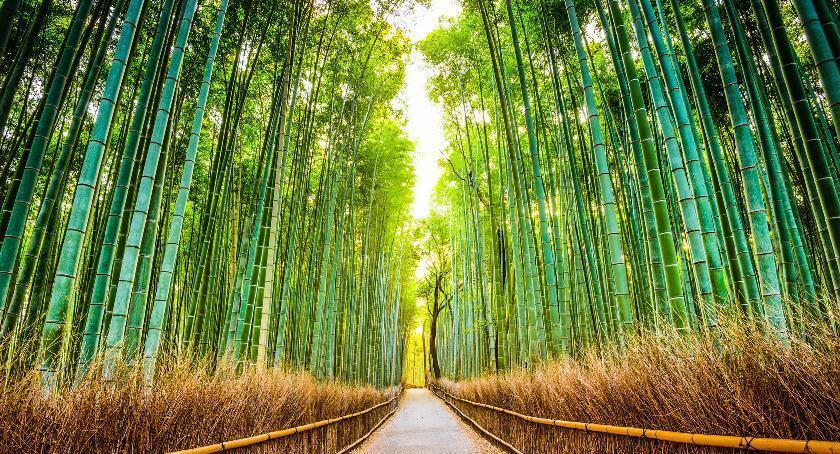In this article, we will introduce you to the 10 best things to do in Kyoto. These suggestions are based on our fun trip to this historic city. Don't forget to like this video, subscribe to our channel and enable notifications. Also share your own experience in the comments below. And stay until the end of the article because we have a bonus for you. Here is our top 10:
Gion

Gion is a charming neighborhood located in the Higashiyama district, known for its preserved traditional architecture and geisha culture. Geishas, also known as geiko in Kyoto, are traditional Japanese performers trained in music, dance and conversation. Gion is also home to many ochaya, traditional Japanese teahouses where geishas entertain their guests. We suggest booking a tea ceremony called The Way of Tea. This traditional ritual involves preparing and serving matcha powdered green tea and enjoying traditional Japanese sweets and snacks such as wagashi. Stroll through beautiful stone-paved shopping streets, like Sannenzaka, and soak up the atmosphere. At the top of the hill is the Buddhist temple Kiyomizu-dera, founded in the 8th century, a UNESCO World Heritage Site, surrounded by many traditional Japanese gardens and stone paths with spectacular views of the city. If you're in the area, explore the rest of the neighborhood, like Shirakawa Lane, located along the canal and surrounded by beautiful traditional Japanese accommodations called ryokans, upscale dining establishments, and entertainment venues; or the nearby Hanamikoji-dori district, with many Japanese pubs and casual dining establishments called izakayas, or the banks of the Kamo River, especially popular in summer.
Kyoto Imperial Palace and Gardens

The Kyoto Imperial Palace was the primary residence of the Japanese imperial family from 1331 until the capital moved to Tokyo in 1869. The palace underwent several renovations and reconstructions over the centuries and is now used primarily for ceremonial events and as a tourist attraction. The palace complex includes many buildings, including the main palace, the Seiryōden Residence, and several gates and walls surrounded by beautiful gardens. It's a great place to discover the history and culture of Japan and learn about the role of the imperial family in the country's history. Kyoto Gyoen, also known as Kyoto Imperial Palace Garden, is a beautiful blend of traditional Japanese and Western-style gardens, with a variety of plants, trees and flowers, as well as a large pond, several bridges and a traditional tea house. It offers a peaceful and picturesque walk, with many paths to explore. It's also a popular place to view cherry blossoms in spring and autumn leaves in fall.
Kyoto tour

Kyoto Tower, built in 1964, is a 131-meter-high observation tower, offering panoramic views of Kyoto and its surrounding areas. The tower is located near Kyoto Station, making it easily accessible. You can take the elevator to the top of the tower and enjoy 360-degree views of the city. A revolving restaurant on the top floor of the tower offers fantastic views of the city while dining, making it particularly enchanting in the evening. Did you know that Kyoto Tower is famous for marriage proposals, as well as the New Year's countdown and fireworks show during summer festivals?
Nishiki Market

Visit Nishiki Market, also known as Kyoto Kitchen, a historic shopping street and one of Japan's oldest and most famous food markets, operating for over 400 years. The market is lined with more than 100 shops and stalls, offering a wide range of local and regional specialties, including fresh seafood, seasonal fruits and vegetables, traditional Japanese sweets, pickled foods and Kyoto-style dishes traditional such as tofu. Here you can have a gastronomy-centric experience, taste the different local delicacies and discover the lively atmosphere of the market. In addition to food, the market also offers traditional Japanese crafts, knives and kitchen utensils. Of course, there are many other places where you can enjoy traditional cuisine, such as Pontocho, a historic narrow alley known for traditional Japanese cuisine such as sushi, tempura, and Kyoto-style kaiseki ryori. Dating from the 16th century, it was originally an entertainment district for the nobility and merchants. Today, it's a must-visit spot for tourists and locals looking for Japanese culture, cuisine, and vibrant nightlife, with bars serving delicious sake. Japanese cuisine is known for its varied flavors, fresh ingredients, delicate techniques and unique combinations. Of course, the must-try dishes to try in Japan are the famous sushi, flavorful ramen or udon, crispy tempura, flavorful teriyaki and much more.
Arashiyama Bamboo Grove

The Arashiyama Bamboo Grove is a natural area known for its large, lush bamboo trees, creating a peaceful and serene environment. The bamboo grove is a popular tourist spot and can be very busy. It is especially beautiful in the early morning or late afternoon, when sunlight filters through the bamboo trees. Visitors can leisurely stroll through the bamboo grove, admiring the tall bamboo stalks and listening to the gentle rustling of the leaves. The bamboo grove is part of the larger Arashiyama area, which is also known for its scenic beauty, traditional temples and shrines, beautiful parks and gardens, such as Okochi Sanso Garden and Togetsu-kyo Bridge, which is a popular place to admire cherry blossoms. Stroll through Tenryu-ji Temple, founded in the 14th century, known for its beautiful gardens, including the famous Sogen Pond Garden. The temple is also known for its cultural and historical significance, as it played a role in the formation of the Rinzai school of Zen Buddhism. Don't forget to explore the beautiful surroundings of the Katsura River, especially enchanting in autumn and spring, where you can relax, take a boat ride or even try one of the many delicious street foods.
Arashiyama Iwatayama Monkey Park

The Monkey Park, located on Mount Arashiyama, is a popular tourist attraction home to a large group of Japanese macaques, also known as snow monkeys. The park allows visitors to observe monkeys up close in a semi-natural environment while enjoying panoramic views of the area. You will have to walk around 20-30 minutes to reach the viewing area where the monkeys can be seen and you will have the opportunity to enjoy incredible panoramic views of the area. The park has a specially designed feeding area where you can purchase food specially provided to feed the monkeys.
Shopping
Kyoto is known for its rich culture, history and shopping. Here are some famous shopping destinations in Kyoto that you can't miss, in addition to the previously mentioned Gion district with its picturesque streets: Teramachi and Shinkyogoku shopping arcades offering traditional and modern shops; shopping malls, like the beautiful Kyoto Station, AEON Mall Kyoto, Takashimaya Kyoto Department Store, etc. ; shopping streets, like Shijo-dori or Kawaramachi-dori, one of the city's most popular destinations, known for its mix of traditional and modern shops, and many others.
Nijo Castle

Nijo Castle, a UNESCO World Heritage Site, was built in the 17th century by Edo period founder Tokugawa Ieyasu as a residence for the military ruler called shogun and as a symbol of shogunal power . The castle is notable for its beautiful gardens and its famous nightingale parquet floors, designed to creak like nightingales when walked on, as a safety measure. Don't forget to visit the beautiful gardens located within the castle grounds or the Ninomaru Goten. This palace was built as a residence for the shogun when he visited the castle and was used to receive important guests and as an official workplace for the shogun. The palace is known for its intricate and ornate architecture, including the use of gold leaf, and for its magnificent gardens.
Kyoto Samurai and Ninja Museum

The samurai were a highly skilled warrior class in feudal Japan, respected for their honor, bravery, and loyalty. They were the military nobility of Japan, serving as vassals to powerful lords or daimyōs, and were known for their distinctive appearance. The samurai have played an important role in Japanese history and culture, serving as Japan's ruling class for many centuries and influencing Japanese society with their code of conduct and values. Despite their decline in the late 19th century during the Meiji Restoration, samurai continue to be celebrated and commemorated in Japan as symbols of bravery, honor and tradition. The Kyoto Samurai and Ninja Museum is dedicated to the history and culture of samurai and ninjas in Japan. The museum offers visitors an interactive experience of the life and training of samurai and ninja during Japan's medieval and modern periods. It houses a collection of weapons and armor from real-life samurai and ninjas, as well as replicas of some of the most famous and powerful weapons used by them. You can observe and learn the techniques used by samurai and ninjas and see how they might have been used in combat. The museum also allows you to try on traditional samurai or ninja clothing and take photos in front of traditional Japanese decor. Don't forget to explore other cultural experiences and activities, like sumo wrestling, onsens hot springs, shodo or Japanese calligraphy, and many others, like the already mentioned tea ceremony.
Fushimi Inari Shrine

Japan has two major religions: Shintoism and Buddhism, which have coexisted for centuries in Japan. Unlike Buddhism, Shintoism has no founder, no sacred text, or central doctrine. Rather, it is a collection of practices and beliefs that have developed over time. Fushimi Inari Shrine is a Shinto shrine founded in 711 by the Hata family and dedicated to Inari, the god of rice and prosperity. It is famous for its thousands of vermilion torii gates that line its hiking trails, donated by individuals and businesses and symbolizing business prosperity. The trails take you through the beautiful forest of the sacred Mount Inari. The shrine is one of Kyoto's most popular tourist attractions, attracting millions of visitors each year, and can be extremely crowded. Of course, Kyoto has over 2,000 temples and shrines, like the Kinkaku-ji Zen Buddhist Temple, and some have already been mentioned in this video.
Bonuses
And here's a bonus we promised. If you have an extra day, be sure to explore the surrounding areas of Kyoto by taking a day trip to the following locations: Osaka, a bustling city known for its food, shopping and entertainment, and home to Universal Studios Japan; Nara, famous primarily for its large population of freely roaming deer; Hiroshima, known for its tragic history as the site of the first atomic bomb attack; and many others. We wish you an incredible trip to Kyoto!






